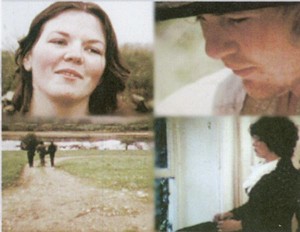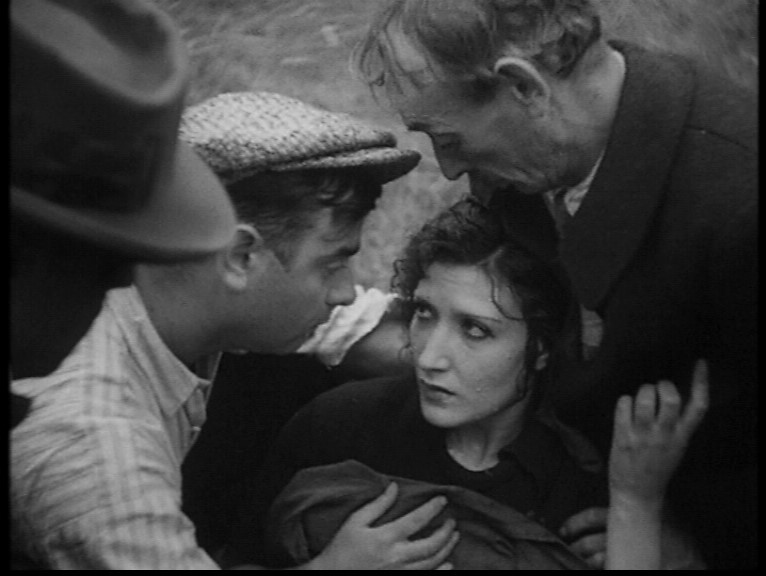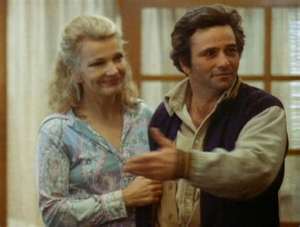From Monthly Film Bulletin, December 1976 (Vol. 43, No. 515). — J.R.

Coilin & Platonida
Great Britain, 1976
Director: James Scott

The 1920s. Thrown out of the house by her uncle, Aksinya marries her lover, a sexton, and five months later gives birth to a son, Coilin. After the sexton drowns in a stream, she works as a servant to nuns, introducing and dressing Coilin as a little girl. Entering school at the age of twelve, Coilin is expelled for backwardness, and finds work as an apprentice to various craftsmen. After three years in the army, he returns to find his mother dead and is turned away from his uncle’s house. Visiting two orphaned boys who are distant relatives and finding them hungry and maltreated, he takes them under his wing and persuades his cousin Platonida to give them clothes. Settling in with the children in an unused room at Granny Rochovna’s cottage, he sells home -made polishand ink, does odd jobs, and applies unsuccessfully for work at the postoffice. Given an island by the town council, he builds a hut and teaches the boys to read. Four years later, Platonida’s husband dies, and her father-in-law promises to leave her his fortune. One night, she finds her father-in-law crouching outside her bedroom window; after she lets him in and he tries to rape her, she strikes at him with a cleaver and runs away, believing that she has killed him. Read more
From Time Out (London), September 13-19, 1974. –- J.R.

For Godard, French neo-realism was born with Jacques Tati’s ‘Jour de Fete’ in 1947. An even likelier candidate might be Jean Renoir’s ‘Toni’ (Everyman to Saturday), shot in southern France in 1934 with a cast of unknowns, and dealing with a community of immigrants who work in a stone quarry. Actually, it’s a melodrama about love and sex, jealousy and murder -– the sort of staples that have kept the cinema going for seventy years or so -– but Renoir invests it with a sense of character and place that gives it an unusually blunt and sensual impact. Neither romanticizing his workers nor turning them into rallying points, he accepts them as they are and follows them where they go. The plot is based on a real crime that occurred in Martigues (where the film was shot) in the early Twenties, Jacques Morier, an old friend of Renoir’s who was the local police chief, assembled the facts, and Renoir wrote the script with another friend, art critic Carl Einstein. The results are both stark and gentle, as well as sexy: Toni sucking wasp poison from Josefa’s lissome neck is a particularly fine moment. Read more
From Monthly Film Bulletin, Vol. 43, No. 504, January 1976. As with some of my other reviews from this magazine reproduced on this site, the credits and synopsis are omitted.– J.R.

Woman Under the Influence, A
U.S.A., 1974
Director: John Cassavetes
Beginning with Shadows, the films of John Cassavetes have been at once limited and defined by their anti-intellectual form of humanism, an unconditional acceptance of the social norms of his characters that exalts emotion and intuition over analysis and, in narrative terms, looseness and approximation over precision. Used as an instrument for delivering a thesis (as in Faces) and/or allowing actors to indulge themselves in fun and games (as in Husbands), it is a style which characteristically operates like a bludgeon, obscuring at least as much as it illuminates while confidently hammering home its proud discoveries. But when it serves as a means for exploration, as in Shadows or A Woman Under the Influence –- however halting or incomplete a method it may be for serving that function — it deserves to be treated with greater credence. Read more




